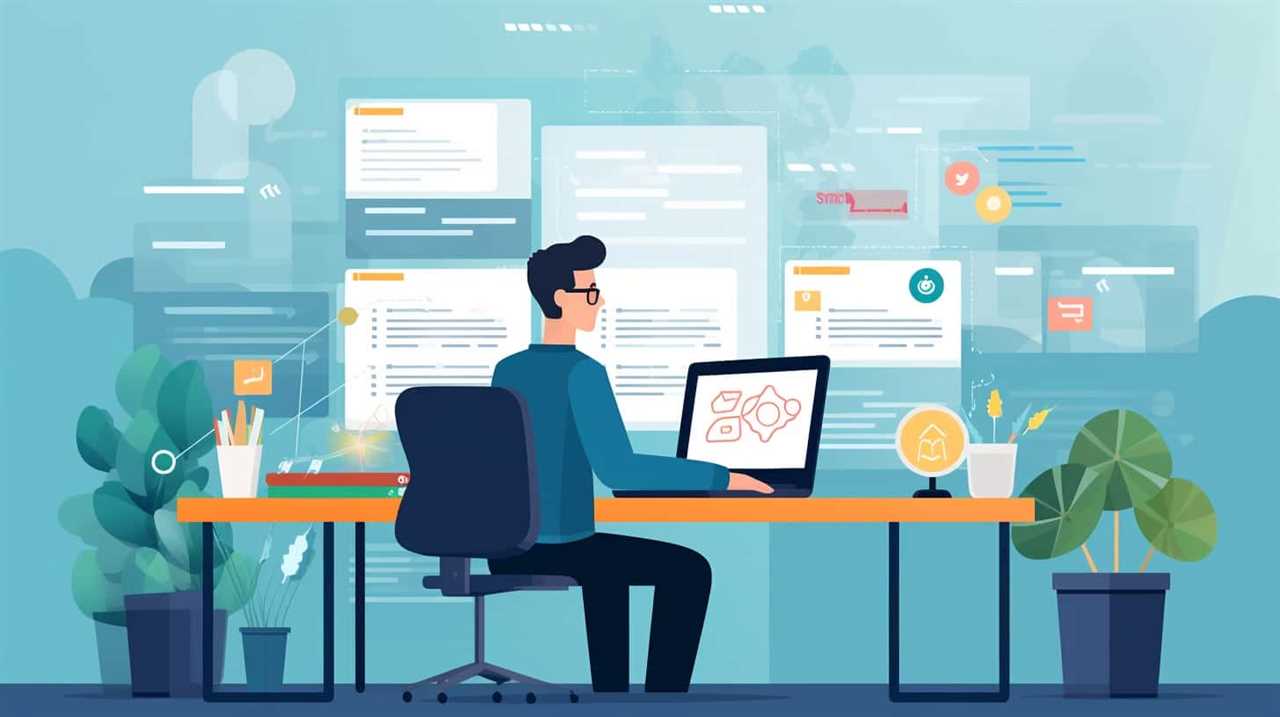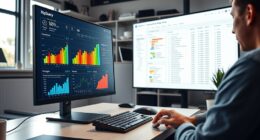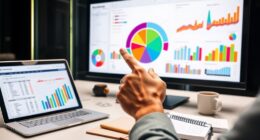Welcome to our guide on improving your local art gallery’s online visibility using SEO! Our goal is to help you draw more online attention to your gallery and increase its presence on the web.
With our data-driven strategies, we’ll guide you through targeting relevant keywords, optimizing your website structure, creating engaging content, and leveraging social media to boost your SEO.
Get ready to enhance your online presence and attract more visitors to your gallery.
Let’s dive in and master the art of SEO for local art galleries!

Key Takeaways
- Local SEO improves search engine visibility and credibility for art galleries in a specific geographic area.
- Targeting relevant keywords with high search volume and low competition drives organic traffic to art gallery websites.
- Optimizing website structure, navigation, and speed enhances user experience and engagement.
- Creating engaging content, such as high-quality images, informative blog posts, and interactive features, attracts and retains visitors.
Understanding Local SEO
To effectively optimize our art gallery’s online presence, we must first understand the principles and strategies behind local SEO. Local SEO refers to the process of improving search engine visibility for businesses that serve a specific geographic area. It focuses on increasing organic search rankings in a specific location, resulting in higher visibility and more targeted traffic.
One important aspect of local SEO is the concept of local citations. These are online mentions of our art gallery’s name, address, and phone number (NAP) on other websites. Local citations can be in the form of business directories, review sites, or social media platforms. They play a crucial role in improving our search engine rankings and establishing our gallery’s credibility within the local community. Therefore, it’s essential to ensure accurate and consistent NAP information across all platforms.
Another crucial element of local SEO is optimizing our Google My Business profile. This free business listing allows us to manage our gallery’s online presence on Google Search and Maps. By providing accurate and up-to-date information about our opening hours, address, and contact details, we can enhance our visibility in local search results. Additionally, regularly updating our profile with high-quality images and engaging posts can attract more potential visitors and boost our online reputation.
Targeting Relevant Keywords
When targeting relevant keywords for our local art gallery’s SEO strategy, we focus on optimizing our online content to attract the right audience. Keyword research plays a crucial role in determining the terms and phrases potential visitors are using to search for art galleries in our area. By incorporating these keywords strategically into our website’s content, we increase our chances of ranking higher in search engine results, ultimately driving more traffic to our gallery.

To illustrate the importance of targeting relevant keywords, let’s take a look at the following table showcasing the search volume and competition level for different keywords related to our local art gallery:
| Keyword | Search Volume | Competition Level |
|---|---|---|
| Art gallery | 5,000 | High |
| Contemporary art | 3,000 | Medium |
| Local artists | 2,500 | Low |
| Art exhibitions | 2,000 | Medium |
| Fine art | 1,500 | High |
As we can see from the data, targeting keywords with high search volume and low competition, such as "local artists" and "art exhibitions," can be more effective in driving organic traffic to our website. This data-driven approach allows us to focus our content marketing efforts on the keywords that have the highest potential to attract our desired audience.
Optimizing Website Structure and Navigation
When it comes to optimizing website structure and navigation for local art galleries, there are several key points to consider.
First and foremost, the site structure should be user-friendly, allowing visitors to easily navigate through different sections and find the information they need.
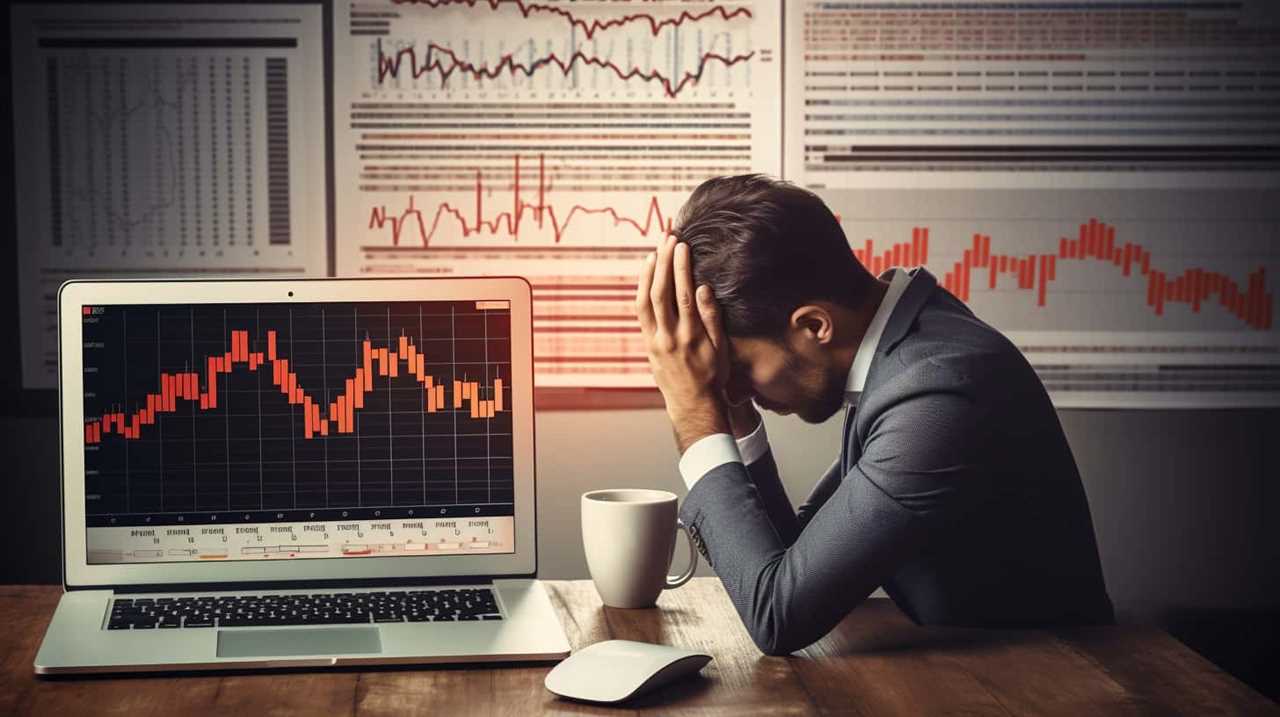
Clear and intuitive navigation menus are essential in guiding users to the right pages, while a SEO-friendly URL structure can enhance search engine visibility and improve the overall user experience.
User-Friendly Site Structure
We prioritize creating a user-friendly site structure by optimizing the website’s structure and navigation for local art galleries. A well-organized website with intuitive navigation is crucial for user engagement and site speed. Users should be able to easily find the information they’re looking for, such as upcoming exhibitions, artist profiles, and contact details.
To achieve this, we recommend implementing a clear and logical site structure that follows a hierarchical format. This ensures that visitors can navigate through the website effortlessly, enhancing their overall experience. Additionally, optimizing site speed is essential for reducing bounce rates and improving user satisfaction. By minimizing page load times and optimizing images, we can create a seamless browsing experience for art enthusiasts.
Now, let’s explore the importance of a clear navigation menu in further detail.

Clear Navigation Menu
Continuing the focus on user-friendly site structure, optimizing the navigation menu is essential for local art galleries to draw digital attention. A clear and intuitive navigation menu enhances the user experience, allowing visitors to easily find and explore the website’s content.
Here are four key elements to consider when optimizing the navigation menu:
- Responsive Design: Ensure that the navigation menu is designed to be responsive, adapting seamlessly to different screen sizes and devices. This ensures that mobile users can easily navigate the website without any issues.
- Clear Labels: Use descriptive and concise labels for each menu item. This helps users understand the content they can expect to find when clicking on each option.
- Hierarchy and Organization: Arrange menu items in a logical and hierarchical order, making it easier for users to navigate through different sections of the website. Consider using drop-down menus for subcategories to maintain a clean and uncluttered look.
- Visible and Accessible: Place the navigation menu in a prominent location on the website, such as at the top or side of the page. Ensure that it’s easily accessible on every page, allowing users to easily switch between different sections without any hassle.
With a well-optimized navigation menu, local art galleries can provide a seamless user experience, leading to increased engagement and conversions.
As we delve into the next section about ‘seo-friendly url structure’, we’ll explore another crucial aspect of optimizing a website for search engines.

Seo-Friendly URL Structure
To further optimize the website structure and navigation, it’s important to implement a SEO-friendly URL structure for local art galleries.
A SEO friendly URL structure refers to the way URLs are formatted and constructed on a website, making them easily readable and understandable by both search engines and users.
The impact of URL structure on search engine rankings can’t be underestimated. When URLs are structured in a logical and descriptive manner, it helps search engines understand the content of a page and improves the overall user experience.
By including relevant keywords in the URL, it also helps search engines determine the relevance of a page to a user’s search query. Therefore, implementing a SEO-friendly URL structure is crucial for local art galleries to improve their visibility in search engine results.

Transitioning into the next section about creating high-quality and engaging content, let’s explore how to combine compelling content with a SEO-friendly URL structure to attract more visitors to the website.
Creating High-Quality and Engaging Content
When it comes to creating high-quality and engaging content for local art galleries, there are several key strategies to consider.
First, visual storytelling techniques can help to captivate and connect with online audiences. By using compelling visuals and narratives, galleries can showcase their artworks in a more immersive and impactful way.
Additionally, incorporating user-generated content strategies can encourage audience participation and create a sense of community, while also providing valuable social proof.
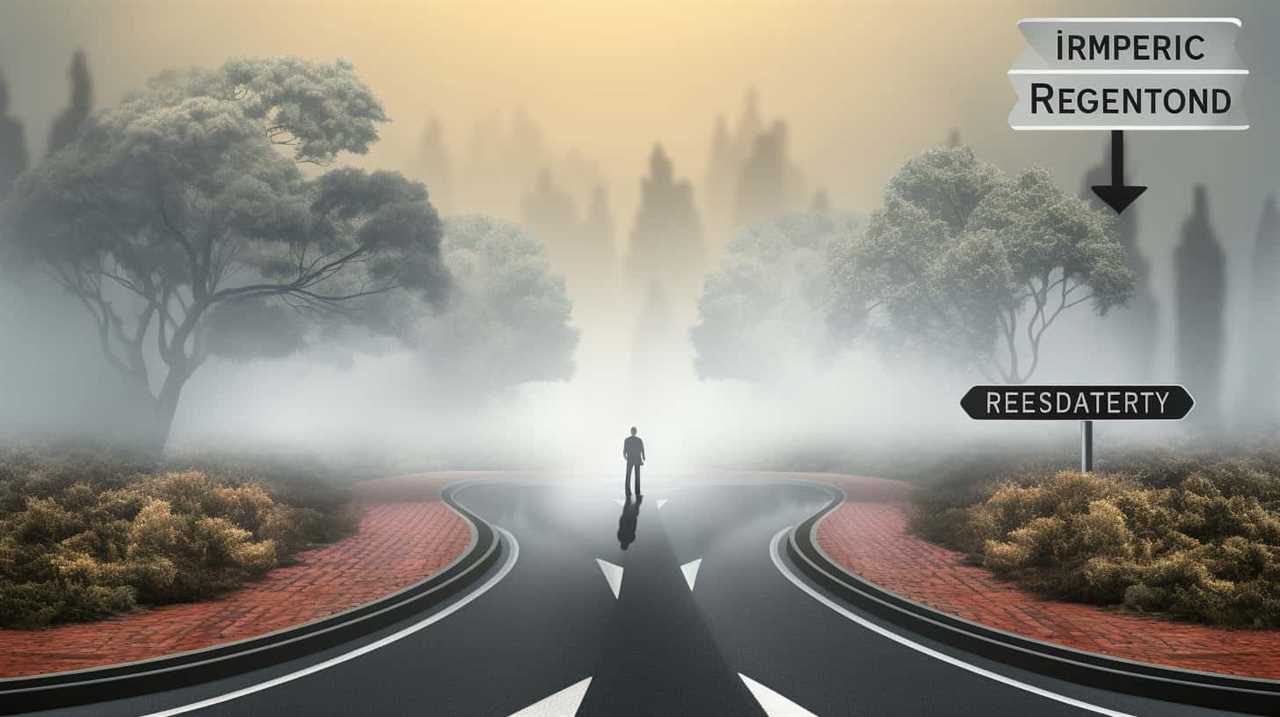
Lastly, optimizing multimedia for SEO is crucial for improving visibility and attracting organic traffic to the gallery’s website. By optimizing image and video metadata, galleries can ensure that their multimedia content is easily discoverable by search engines and users alike.
Visual Storytelling Techniques
We create high-quality and engaging content through the use of visual storytelling techniques. Our goal is to captivate our audience and immerse them in the world of art. Here are four techniques we employ:
- Interactive exhibits: We design exhibits that encourage visitor participation, allowing them to interact with the artwork and become part of the narrative.
- Virtual tours: Through immersive virtual experiences, we bring the art gallery to the digital realm, enabling users to explore our exhibits from the comfort of their homes.
- Compelling visuals: We utilize stunning visuals, including high-resolution images and videos, to showcase the beauty and intricacy of the artwork, creating a captivating visual experience.
- Narrative structure: We craft a compelling narrative around the art, telling stories that resonate with our audience and evoke emotions, fostering a deeper connection between the viewer and the artwork.
By employing these visual storytelling techniques, we ensure that our content is visually appealing, engaging, and leaves a lasting impression on our audience.
Now, let’s delve into the next section and explore user-generated content strategies.

User-Generated Content Strategies
Continuing our exploration of visual storytelling techniques, we actively involve our audience in the creation of high-quality and engaging content through user-generated strategies. User-generated content (UGC) refers to any form of content created by users, such as reviews, photos, videos, and social media posts, that promotes and showcases our art gallery. This strategy not only allows us to tap into the creativity and enthusiasm of our audience but also helps us build a sense of community and authenticity around our brand.
To effectively implement user-generated content strategies, we focus on two key approaches: content curation and influencer collaborations. Through content curation, we collect and showcase the best user-generated content that showcases our artwork and gallery experience. This not only provides valuable social proof to potential visitors but also encourages others to contribute their own content. In addition, we collaborate with influencers in the art and cultural space to create and promote user-generated content. By leveraging their reach and influence, we can amplify our brand message and attract a larger audience.
To illustrate the impact of user-generated content strategies, let’s take a look at the following table that highlights the benefits:
| Benefits of User-Generated Content Strategies |
|---|
| Increased brand authenticity |
| Higher engagement and interaction |
| Expanded reach and audience growth |
Optimizing Multimedia for SEO
To optimize multimedia for SEO and create high-quality, engaging content, our focus is on leveraging the power of visuals and interactive elements to captivate our audience and boost our online visibility.

Here are four key strategies for multimedia optimization and image SEO:
- High-resolution images: Use high-quality, visually appealing images that showcase the unique artworks in your gallery. Optimize them by reducing file size without compromising quality.
- Alt tags and image descriptions: Provide descriptive and keyword-rich alt tags and image descriptions for each multimedia element. This helps search engines understand the content and improves accessibility.
- Video content: Incorporate videos that highlight exhibitions, artist interviews, or behind-the-scenes footage. Optimize videos by adding relevant titles, descriptions, and tags to increase their visibility in search results.
- Interactive elements: Engage your audience with interactive elements such as virtual tours, interactive maps, or quizzes related to the artworks. These interactive features not only enhance user experience but also increase the time spent on your website.
By implementing these multimedia optimization strategies, you can enhance your online presence and attract more organic traffic to your art gallery’s website.
Now, let’s explore how leveraging social media can further boost your SEO efforts.
Leveraging Social Media for SEO
In order to optimize our local art gallery’s online presence, we can maximize our SEO efforts by effectively leveraging social media platforms.

Social media algorithms play a crucial role in determining the visibility and reach of our content. By understanding how these algorithms work, we can strategically tailor our social media posts to increase our online visibility.
Influencer marketing is another powerful strategy for enhancing our SEO through social media. Collaborating with influencers who have a strong online following can help us reach a wider audience and increase our brand visibility. These influencers can create engaging content featuring our art gallery, driving traffic to our website and increasing our online presence.
To leverage social media for SEO, it’s important to focus on creating high-quality, keyword-rich content that resonates with our target audience. By using relevant keywords in our social media posts, captions, and hashtags, we can improve our search engine rankings and attract more visitors to our website.
Additionally, engaging with our followers, responding to comments, and sharing user-generated content can help build a sense of community and increase our social media engagement, further boosting our online visibility.

Building Local Citations and Backlinks
We can strengthen our local art gallery’s online presence by building local citations and backlinks. These strategies are essential for improving our website’s visibility in search engine results and attracting more visitors.
Here are four effective ways to build local citations and backlinks:
- Local business directories: Listing our gallery on popular local business directories such as Yelp, Google My Business, and Yellow Pages can significantly enhance our online visibility. These directories provide important information about our gallery, including address, contact details, and website link.
- Influencer partnerships: Collaborating with influential individuals in the art community, such as artists, critics, or local bloggers, can help us gain exposure and build backlinks. By featuring our gallery on their websites or social media platforms, we can attract a wider audience and improve our search engine rankings.
- Guest blogging: Writing informative and engaging articles for reputable art-related websites or blogs not only helps us establish ourselves as experts in the field but also provides an opportunity to include backlinks to our website. This can drive traffic and improve our website’s authority.
- Local event sponsorships: Sponsoring local art events or exhibitions allows us to gain exposure within the community and build relationships with other art organizations. This can lead to valuable backlinks from their websites or social media pages.
Enhancing User Experience and Mobile Optimization
Improving the user experience and optimizing for mobile devices are crucial for boosting our local art gallery’s online visibility and attracting more visitors. In today’s digital age, mobile first design has become essential for ensuring that our website provides a seamless and enjoyable experience for users on smartphones and tablets. By prioritizing the mobile experience, we can capture the attention of a wider audience and increase our chances of converting them into gallery visitors.
One key aspect of mobile optimization is improving page load speed. Research has shown that users are more likely to abandon a website if it takes longer than a few seconds to load. By optimizing images, minimizing code, and leveraging caching techniques, we can significantly reduce the load time of our website and provide a faster browsing experience for our visitors.

In addition to page load speed, we should also focus on creating a user-friendly interface that’s easy to navigate on mobile devices. This includes using clear and concise menus, ensuring that buttons and links are easily clickable, and optimizing the layout for smaller screens. By making it effortless for users to explore our website and discover the artwork we’ve to offer, we can enhance their overall experience and encourage them to visit our gallery in person.
Utilizing Online Reviews and Testimonials
To further enhance our local art gallery’s online visibility and credibility, we can effectively utilize online reviews and testimonials. Online reputation management is crucial for any business, including art galleries. By actively managing and responding to customer feedback, we can build a positive online reputation that will attract more visitors to our gallery. Here are four ways we can utilize online reviews and testimonials to boost our gallery’s online presence:
- Encourage customers to leave reviews: We can ask our visitors to leave reviews on popular review platforms such as Google My Business, Yelp, and TripAdvisor. Positive reviews won’t only improve our overall rating but also provide social proof of the quality of our gallery.
- Respond to reviews: It’s important to actively engage with our customers by responding to both positive and negative reviews. By addressing any concerns or issues raised in the reviews, we show that we value our customers’ feedback and are committed to providing excellent service.
- Showcase testimonials on our website: We can feature testimonials from satisfied customers on our website. Testimonials add credibility and demonstrate the positive experiences others have had at our gallery.
- Use customer feedback analysis: By analyzing customer feedback, we can gain valuable insights into what aspects of our gallery are working well and areas that may need improvement. This analysis helps us make data-driven decisions to enhance our gallery’s offerings and customer experience.
Monitoring and Analyzing SEO Performance
Monitoring and analyzing our gallery’s SEO performance allows us to track the effectiveness of our online visibility strategies and make informed decisions for further optimization. By tracking SEO trends and measuring the ROI of our SEO efforts, we can ensure that our website is attracting the right audience and driving relevant traffic.
To effectively monitor our SEO performance, we utilize various tools and techniques. One of the key metrics we focus on is organic search traffic. By monitoring the number of visitors coming to our website through search engines, we can determine the impact of our SEO efforts. Additionally, we analyze keyword rankings to understand how well our website is ranking for relevant search terms. This helps us identify areas for improvement and optimize our content accordingly.

Measuring the ROI of our SEO efforts is crucial for determining the success of our strategies. We analyze metrics such as conversion rates, bounce rates, and time on page to evaluate the quality of the traffic we’re attracting. By understanding the actions visitors take on our website, we can identify opportunities to improve user experience and drive more conversions.
Conclusion
In conclusion, implementing effective local SEO strategies is like painting a masterpiece. By targeting relevant keywords, optimizing website structure, creating engaging content, and leveraging social media, art galleries can draw digital attention and increase their visibility.
Similarly, building citations and backlinks, enhancing user experience, and utilizing online reviews are crucial aspects of local SEO that can contribute to the success of art galleries in the digital landscape.
Just like an artist carefully selects their brushstrokes and colors to create a captivating image, art galleries can use data-driven techniques to attract and engage their audience. This can ultimately lead to success and increased visibility in the digital landscape.
